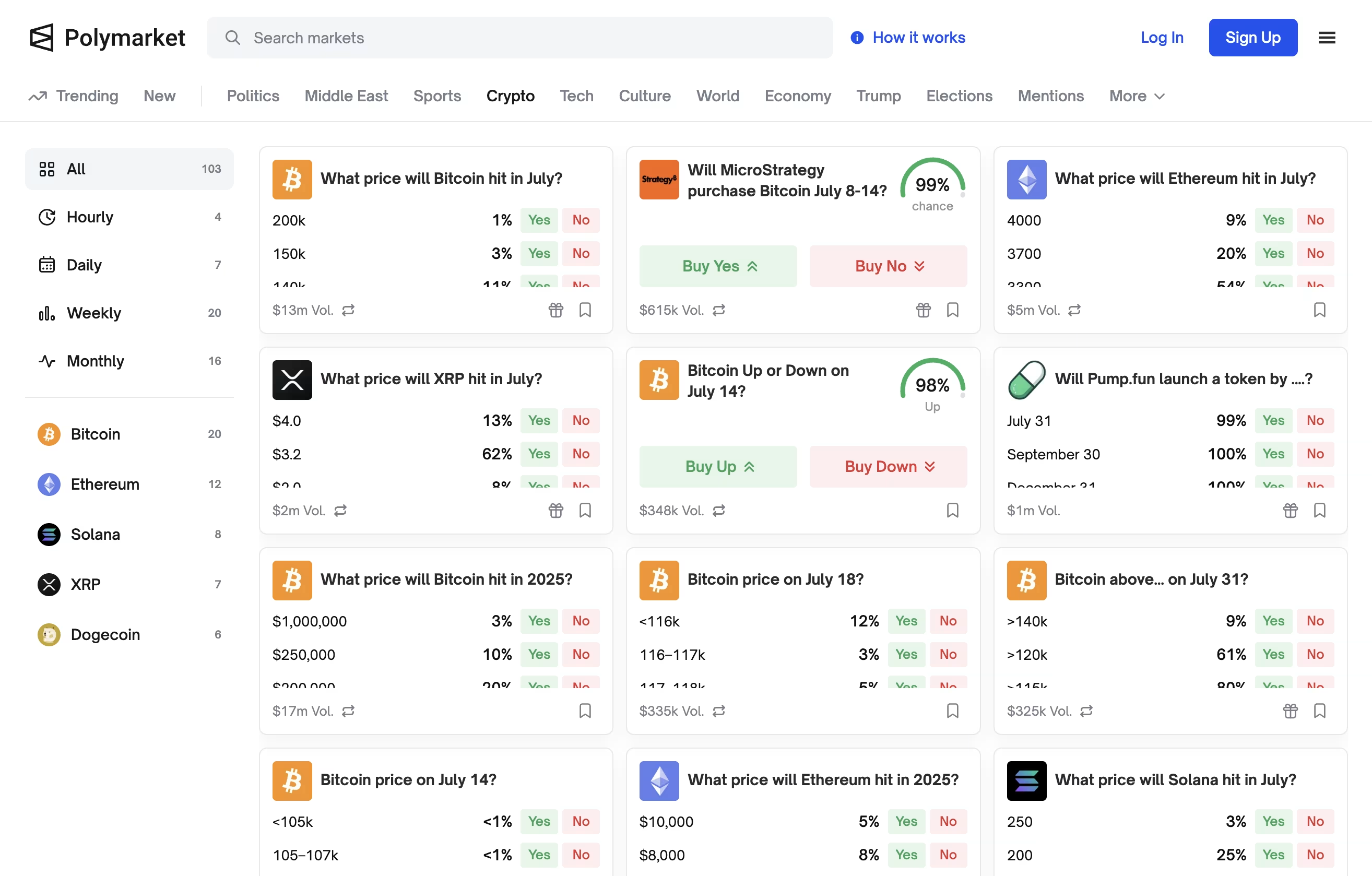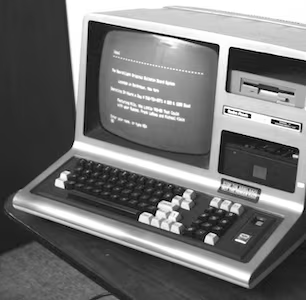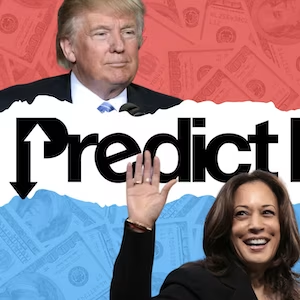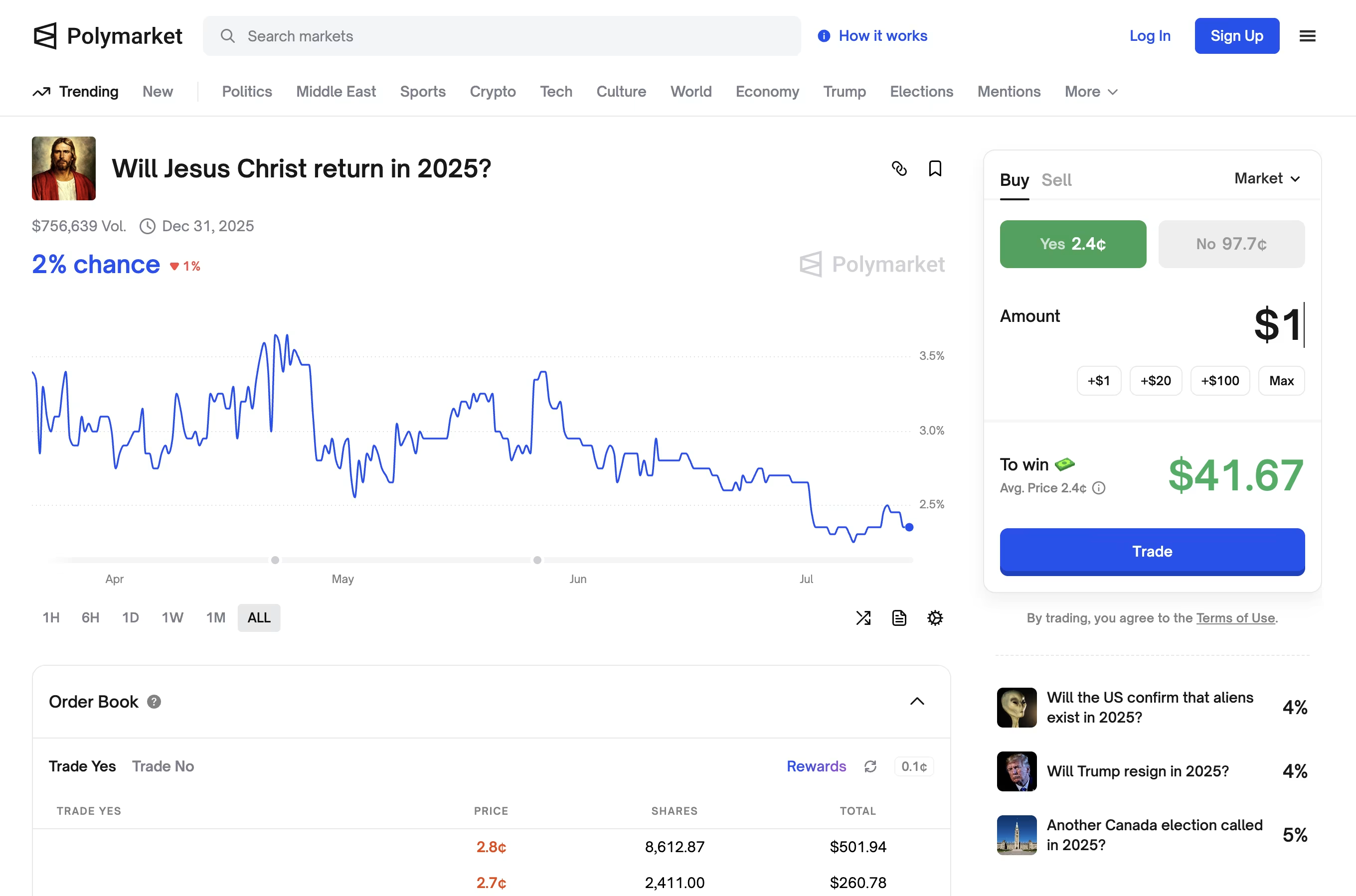Crypto has no usecase.
You've heard it countless times – from skeptical friends at dinner parties, traditional finance veterans on CNBC, and that one colleague who still thinks Bitcoin is just "fake internet money." And honestly? There's more than a grain of truth to this critique. Most crypto projects struggle to demonstrate real-world utility.
But every now and then, something breaks through the noise.
Polymarket – the crypto-based prediction platform has quietly become the most successful prediction market in human history. In 2024 alone, it generated over $9 billion in trading volume – more than many established financial markets.

When traditional polls showed a neck-and-neck race for the U.S. presidency, Polymarket users were confidently betting on Trump's victory weeks before election day. They were right, and legacy forecasters were wrong.
In June 2025, X (formerly Twitter) named Polymarket as its official prediction market partner, integrating real-time odds with Grok AI and live social media insights. Betting on future events is no longer just profitable – it’s part of an essential infrastructure for how we process information in an era of informational noise and fake news.
So how did we get here?
What are prediction markets?
At their core, prediction markets are simple: people bet money on the outcomes of future events. As a side effect, those collective bets reveal what the crowd truly believes will happen.
Prediction markets often see what traditional forecasting misses. While polls capture what people say they'll do, prediction markets reveal what informed observers think will actually happen. During major events like Brexit or Trump's 2016 victory, betting markets demonstrated an uncanny ability to cut through noise to reveal uncomfortable truths. In an age of information overload and "alternative facts," that's a superpower.
While betting on future events has long history, from wagering on gladiatorial matches in Rome to betting on papal elections in 16th century Italy, understanding these markets as forecasting tools would come much later.
A Brief History

1884: Wisdom of Crowds
Wall Street betting pools were accurately predicting U.S. presidential elections. What these early traders had stumbled upon was what Francis Galton would formally identify in 1907 through his famous ox-weight guessing experiment: the "wisdom of crowds." When a group of country fair visitors collectively guessed an ox's weight, their average was nearly perfect—more accurate than any individual expert.
The magic happens through what economists call "information aggregation." When thousands of people risk their own money on an outcome, they collectively process information more efficiently than any individual expert. The trader who knows something others don't can profit by betting accordingly, moving the odds toward the truth.

1988: Modern Era
This principle carried into the modern era. The Iowa Electronic Markets, became the first electronic prediction market and consistently outperformed polls in forecasting election results.

2001: Before Crypto
Intrade, which operated from 2001 to 2013, gained mainstream attention for accurately calling everything from Oscar winners to presidential races. When Intrade shut down under regulatory pressure, platforms like PredictIt—the most successful predecessor to Polymarket—emerged to fill the void, though with strict betting limits that constrained their impact.

2014: Hivemind
Paul Sztorc proposed Hivemind (originally Truthcoin), a Bitcoin sidechain using "vote coins" to resolve market outcomes. Token holders would vote on whether events occurred, with economic incentives rewarding honest reporting. Despite thoughtful game theory and economics, Hivemind never launched due to Bitcoin's limited scripting capabilities and the technical complexity of bootstrapping a two-way peg sidechain.

2015: Augur
Augur raised ~$5 million in an ICO to become the world's first decentralized prediction market, launching on Ethereum in 2018. Users could create markets on anything, but the platform suffered from terrible user experience, high gas fees making small bets unviable, and disturbing markets on assassinations and terrorist attacks that it couldn't stop without abandoning its censorship-resistant principles. Despite years of development, it never achieved the liquidity needed for accurate price discovery.
Both Hivemind and Augur were crucial proof-of-concepts that demonstrated blockchain-based prediction markets were possible—but also revealed the enormous challenges involved. The stage was set for someone to get it right.
Polymarket's Rise
Polymarket launches in 2020, while the crypto world is obsessing over DeFi yield farming and NFT profile pictures.
Its founder Shayne Coplan had studied the failure of Augur and understood that technical elegance meant nothing if regular people couldn't figure out how to place a bet.
Instead of Augur's complex market creation tools and confusing interfaces, Polymarket offered simple yes/no questions. "Will Donald Trump win the 2020 election?" You could bet "Yes" or "No." That was it. No need to understand complicated betting mechanics or decipher cryptic market descriptions.
While other platforms used obscure governance tokens or synthetic assets, Polymarket dealt in USDC—a stablecoin that regular people could understand. Shares were priced between $0.00 and $1.00, with winners redeeming for exactly $1.00 USDC. The math was dead simple.
The results speak for themselves. Polymarket has generated over $14 billion in cumulative trading volume since launch, with $9 billion in 2024 alone. Compare that to Augur's lifetime volume of perhaps $50 million, or Intrade's peak annual volume of around $50 million. Polymarket brought the prediction market idea to the masses and achieved mainstream cultural relevance.
The platform now boasts 1.6 million registered users and routinely handles $50+ million in daily volume. During major events like the 2024 U.S. election, trading volume exceeded that of many traditional financial markets. When major news breaks, traders now look to Polymarket odds alongside traditional indicators.
Volume: $14B
Users: 200-500k monthly active
Highlights: TIME's 100 Most Influential Companies (2025); accurate 2024 U.S. election forecast; partnerships with X; mainstream media coverage (CNN, Bloomberg); endorsed by Elon Musk.
Volume: $5-10B
Users: 2M
Highlights: First CFTC-regulated U.S. prediction market; $2B valuation (2025); focuses on sports (79% volume), economy; 100x volume growth in 2024.
Volume: $50M
Users: Low thousands
Highlights: First decentralized crypto prediction market; influenced later platforms but plagued by UX issues, low liquidity, and controversial markets.

Volume: $300-500M
Users: 150k+
Highlights: Academic roots; frequent media citations for election odds; outperformed polls in accuracy; constrained by $850 bet caps and regulations.
Volume: $200-500M
Users: 50-100k peak
Highlights: Pioneered real-money political betting; accurately predicted U.S. elections (2008, 2012); media reference for odds; shut down due to U.S. regulatory pressures.

Volume: $5M
Users: Thousands
Highlights: First electronic prediction market (1988); consistently outperforms traditional polls in election forecasts; operated for research and teaching by University of Iowa; received CFTC no-action relief.
Kalshi launched in 2021 as Polymarket's most serious competitor – the first fully CFTC-regulated prediction market operating legally in the U.S. While Polymarket pioneered the crypto-native approach, Kalshi took the opposite bet: work within the traditional regulatory framework. The strategy has paid off in terms of user numbers, with Kalshi reaching 2 million users. However, Polymarket remains the more culturally significant platform, driving major narratives around elections, global events, and emerging trends that capture public imagination.
UPDATE: In the weeks after publication, I learned about many more new prediction market projects. I collected them here:
— klos (@klos) August 9, 2025
How does Polymarket work?
Polymarket operates as a simple binary prediction market. Users buy shares in "Yes" or "No" outcomes for future events, with shares priced between $0.00 and $1.00. Winners receive exactly $1.00 USDC per share. An automated market maker adjusts prices based on trading activity – when more people buy "Yes" shares, the price rises, reflecting increased confidence in that outcome. polymarket.com

The platform runs on Polygon (migrated from Ethereum to avoid high gas fees), enabling the micro-transactions that make small-stakes betting economically viable. coinmetrics.substack.com
Is Polymarket decentralized?
It's a hybrid system. Polymarket Inc. controls the platform, user interface, and market creation, plus maintains a Market Integrity Committee that can override outcomes in extreme cases. However, all trades occur on the Polygon blockchain, and market resolution depends on the UMA Optimistic Oracle – a decentralized system where outcomes are voted on by token holders rather than company employees. kucoin.com
Oracles remain a weak spot in many decentralized systems. The controversial Zelenskyy suit market resolved as "No" despite photographic evidence, leading to accusations that large UMA token holders manipulated the outcome. Yet when Polymarket's committee previously overruled a similar disputed case, critics accused the platform of undermining decentralized principles. coindesk.com
How Polymarket resolves what is true?
The platform uses the decentralized UMA Optimistic Oracle for resolutions, where anyone can propose outcomes with a bond, challenges are voted on by token holders over 48 hours, and economic incentives ensure honest reporting (claiming 90.4% accuracy a month out). gate.com
Polymarket: Iconic Moments

2022: U.S. Regulatory Shutdown
The CFTC fined Polymarket $1.4 million and forced the platform to block all U.S. users, deeming it an unregistered derivatives exchange. This regulatory action pushed Polymarket into international markets only, limiting its growth potential despite American users representing a significant portion of prediction market interest. bloomberg.com

2023: The Titan Submersible Tragedy
When the Titan submersible went missing during its voyage to the Titanic wreckage, Polymarket created a market on whether the vessel would be found. As rescue efforts intensified and the world watched in horror, people were literally betting on life and death. The platform faced intense criticism for commodifying tragedy, sparking debates about the ethical boundaries of prediction markets. It was a stark reminder that not all information discovery is morally neutral. polymarket.com

2024: Silicon Valley Validation
Polymarket raised $70 million in a funding round that read like a crypto who's who: Ethereum founder Vitalik Buterin, Peter Thiel's Founders Fund, and other A-list investors pushed the platform's valuation above $1 billion. Suddenly, prediction markets weren't just gambling – they were venture-scale infrastructure for the information economy. proactiveinvestors.com

July 2024: The Biden Withdrawal Call
While mainstream media debated Biden's debate performance and polls showed a tight race, Polymarket odds told a different story. The platform's "Biden to withdraw" market surged from 20% to 70% in the days following his disastrous debate performance. When Biden actually dropped out weeks later, Polymarket had once again proven more prescient than traditional forecasting. It wasn't just luck – it was crowds processing information faster than institutions. axios.com

November 2024: The Election That Changed Everything
The 2024 presidential election became Polymarket's defining moment. While legacy polls showed a statistical dead heat between Trump and Harris, Polymarket consistently favored Trump – and the platform was right. Over $3.3 billion in volume flowed through election-related markets, with users making over $1.5 billion in bets on Trump's victory alone.
The star of the show? A mysterious French trader who bet between $30-45 million on Trump across multiple accounts, ultimately walking away with $85 million in winnings. The "French whale" became an internet legend, though it sparked investigations into potential market manipulation and raised questions about whether a single large bettor could skew odds. thefp.com

November 2024: The FBI Raid
Just days after Trump's victory, FBI agents raided CEO Shayne Coplan's New York apartment as part of a DOJ investigation into whether Polymarket was allowing U.S. users to circumvent geographical restrictions. The timing raised eyebrows – was this about regulatory compliance or political retaliation for embarrassing the polling establishment? theguardian.com

June 2025: TIME's Recognition
Polymarket landed on TIME Magazine's list of the 100 Most Influential Companies, cementing its transition from crypto curiosity to mainstream cultural force. CEO Shayne Coplan celebrated the recognition as validation that people wanted "the truth" – a not-so-subtle dig at traditional media and polling. time.com

June 2025: The X Partnership
The ultimate validation came when X (formerly Twitter) named Polymarket its official prediction market partner. The integration would combine real-time betting odds with Grok AI analysis and live social media feeds, creating a new hybrid of prediction and social discovery. Elon Musk, who had repeatedly endorsed Polymarket's accuracy during the election, was reportedly instrumental in the partnership. observer.com

July 2025: The Zelensky Suit Controversy
Most recently, Polymarket found itself embroiled in its biggest controversy since the Titan submersible. A market on whether Ukrainian President Zelensky would wear a suit to a specific event generated $237 million in volume – the largest non-election market in the platform's history.
When the market resolved as "No," ruling that Zelensky didn't wear a suit, accusations of manipulation erupted. Critics alleged that whales had manipulated the outcome and that bots had gamed the oracle system, generating over 24,000 angry comments and exposing potential flaws in decentralized consensus mechanisms. wired.com
Deltabadger users may now ask: As Polymarket continues to grow – with partnerships like X, endorsements from tech titans like Elon Musk, and projected 100x growth by 2028 – how might that impact the underlying infrastructure powering it all?
Conclusion
Polymarket is not to miss.
The fundamentals and growth trajectory are strong, with some expecting 100x growth by 2028. From $9 billion in trading volume in 2024 to partnerships with X and endorsements from Elon Musk, the platform has crossed the chasm from crypto curiosity to mainstream awareness.
This makes a compelling case for the Polygon network – as Polymarket scales, it could drive the usage-driven demand needed to justify POL's tokenomics. If you're looking for a long-term asymmetric bet, the time is now. Polygon trades 85% below its all-time high while powering one of crypto's most successful applications.
Opening an account on Polymarket can potentially qualify you for an upcoming airdrop, based on widespread community speculation and historical patterns from similar platforms.
Key developments to watch: regulatory changes that could allow U.S. re-entry, the tightening integration with X and Grok AI, and potential token launch announcements. Prediction markets are becoming part of mainstream information discovery infrastructure, and Polymarket is positioned to lead this transformation.




